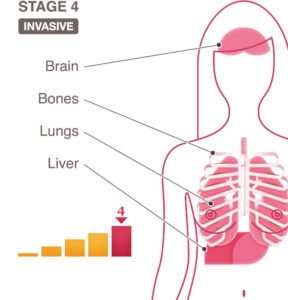Physical Therapy Exercise After a Total Shoulder Replacement
Physical Therapy for Recovery After Total Shoulder Replacement
Undergoing a total shoulder replacement is a significant step toward relieving chronic shoulder pain and restoring function. Physical therapy (PT) plays a critical role in your recovery, helping you regain strength, mobility, and confidence in using your shoulder. A skilled physical therapist will design a personalized program to reduce discomfort, improve range of motion, and enhance upper body strength, ensuring you can return to daily activities with ease. Exercise is the cornerstone of this rehabilitation process, but what are the best PT exercises to support your recovery? Let’s explore.
Why Physical Therapy Matters Post-Surgery
Physical therapy after a total shoulder replacement is essential for optimal healing. It helps you:
- Minimize Pain: Targeted exercises and techniques reduce post-surgical discomfort.
- Restore Mobility: Gentle movements improve your shoulder’s range of motion.
- Build Strength: Strengthening exercises enhance the stability and function of your shoulder and arm.
- Prevent Complications: Proper guidance reduces the risk of stiffness or re-injury.
Your therapist will tailor your rehab plan based on the type of surgery you’ve had and your overall health, ensuring a safe and effective recovery.
Understanding Total Shoulder Replacement
Total shoulder replacement surgery is typically performed to treat severe shoulder arthritis, where the cartilage in the ball-and-socket joint wears down, causing pain, stiffness, and limited mobility. During the procedure, the damaged parts of the shoulder joint are removed and replaced with prosthetic components:
- The ball (top of the upper arm bone) is replaced with a metal component.
- The socket (part of the shoulder blade) is fitted with a durable plastic piece.
This allows for smoother joint movement and significant pain relief. After surgery, your arm will likely be immobilized in a sling for several weeks to promote healing. Once cleared by your surgeon, physical therapy begins to guide you through recovery.
Types of Shoulder Replacement Surgery
There are two main types of total shoulder replacement, each affecting the rehab process:
1. Standard Total Shoulder Replacement
In this procedure, the damaged ball and socket are replaced with prosthetic components that mimic the natural joint. It’s typically recommended for patients with healthy rotator cuff muscles, which stabilize the shoulder. Rehabilitation often includes exercises to strengthen the rotator cuff.
2. Reverse Total Shoulder Replacement
This surgery reverses the ball and socket placement: the ball is attached to the shoulder blade, and the socket is fixed to the upper arm. It’s ideal for patients with damaged or non-functional rotator cuffs. Rehab for reverse shoulder replacement avoids rotator cuff-specific exercises to protect the new joint configuration.
Your physical therapist will adjust your exercise plan based on the surgery type to ensure safe and effective recovery.
Getting Started with Physical Therapy
Before starting any exercises, consult your surgeon and physical therapist to confirm they’re safe for your condition. Your PT program will progress in stages:
- Gentle Range of Motion: Early exercises focus on loosening the joint without straining it.
- Strength Building: As healing progresses, you’ll work on strengthening the shoulder and surrounding muscles.
- Functional Training: Later stages incorporate activities to restore everyday movements, like reaching or lifting.
If any exercise causes persistent pain, stop immediately and contact your healthcare provider. Below are some of the most effective PT exercises to support your recovery.
1. Pendulum Exercises for Gentle Mobility
Pendulum exercises are often the first step in shoulder rehab, as they promote gentle movement and relax the muscles around the surgical site.
How to Perform Pendulum Exercises:
- If using a sling, carefully remove it with your therapist’s approval.
- Lean forward slightly at the waist, supporting yourself with your non-surgical hand on a stable surface, like a table.
- Let your surgical arm hang relaxed toward the floor.
- Gently sway your body to create small, circular motions in your shoulder (about 1 foot in diameter).
- Complete 10 circles clockwise, then 10 counterclockwise.
- Perform this exercise 2–3 times daily, as advised by your therapist.
This low-impact exercise encourages blood flow and prevents stiffness without overloading the joint.
2. Assisted Range of Motion with a Cane
Once your shoulder is stable enough, your therapist may introduce assisted range-of-motion exercises using a cane or broomstick. These help you gradually regain flexibility.
Cane Exercise for Overhead Motion:
- Lie flat on your back on a bed or firm surface.
- Hold a cane or stick with both hands at waist level.
- Use your non-surgical arm to guide the cane upward, lifting your surgical arm overhead as far as comfortable.
- Slowly lower back to the starting position.
- Repeat for 10 repetitions, 1–2 times daily.
Cane Exercise for Side Motion (Abduction):
- Stand upright, holding the cane with both hands at waist level.
- Use your non-surgical arm to push the cane outward, guiding your surgical arm to the side.
- Move as far as feels comfortable, then return to the starting position.
- Repeat for 10 repetitions.
Don’t worry if you can’t fully extend your arm initially—progress will come with consistent practice. Avoid forcing the shoulder to prevent strain.
3. Hand Grip Exercises to Maintain Dexterity
While your arm is in a sling, the muscles in your forearm and hand may weaken due to inactivity. Hand grip exercises keep these muscles active and support overall arm function.
How to Perform Hand Grip Exercises:
- Roll a small hand towel into a tight cylinder.
- Squeeze the towel firmly in your hand for 3–5 seconds, then relax.
- Repeat for 10–15 repetitions, 1–2 times daily.
- Alternatively, use therapy putty (available from your therapist or a craft store). Squeeze or pinch the putty for similar benefits.
These exercises can often begin a few days after surgery, even with your arm in a sling, but always confirm with your surgeon first.
4. Rotator Cuff Strengthening (Standard Replacement Only)
For patients with a standard total shoulder replacement, rotator cuff exercises may be included to stabilize the shoulder joint. These are typically avoided in reverse shoulder replacement to protect the joint.
External Rotation Exercise with a Resistance Band:
- Secure a resistance band to a stable object, like a doorknob, at waist height.
- Stand with your surgical arm closest to the band, holding the band with your elbow bent at 90 degrees and tucked into your side.
- Slowly pull the band outward, moving your forearm away from your body.
- Return to the starting position with control.
- Perform 10–12 repetitions, 1–2 times daily.
Internal Rotation Exercise:
- Attach the band to the same anchor point.
- Stand with your non-surgical side facing the band, holding it with your surgical hand.
- Pull the band inward across your body, keeping your elbow at your side.
- Slowly return to the starting position.
- Repeat for 10–12 repetitions.
Start with light resistance and progress as your strength improves, under your therapist’s guidance.
Tips for a Successful Recovery
- Follow Professional Guidance: Always check with your surgeon and physical therapist before starting or modifying exercises.
- Stay Consistent: Perform exercises as prescribed to see steady progress.
- Listen to Your Body: Mild discomfort is normal, but sharp or lasting pain signals the need to stop and consult your doctor.
- Be Patient: Full recovery can take weeks to months, but consistent effort will yield results.
Conclusion
Physical therapy is a vital part of recovering from a total shoulder replacement, helping you regain mobility, strength, and independence. By working closely with your physical therapist and incorporating exercises like pendulums, cane-assisted movements, hand grips, and rotator cuff strengthening (when appropriate), you can achieve a successful recovery. Always prioritize safety and professional guidance to ensure the best outcomes for your shoulder health.
💡 Frequently Asked Questions
Consequently what are favourable PT routines that could be completed the moment over-all shoulder alternative?
Answer coming soon. We are working on detailed responses to this common question.
What aspects are unachievable for on your own toward do?
Answer coming soon. We are working on detailed responses to this common question.
What job or leisure match do by yourself need in direction of return towards?
Answer coming soon. We are working on detailed responses to this common question.
⭐ Expert Tips
- Include seasonal or trendy variations to keep your meals exciting.
- Highlight prep shortcuts or time-saving techniques for busy cooks.
- Consider dietary restrictions and include substitution suggestions.
✅ Key Takeaways
- These dinner ideas are perfect for impressing guests or enjoying special occasions.
- Choose recipes that match your skill level and available kitchen tools.
- Presentation and taste both contribute to a memorable dining experience.
📣 Join Our Community
Want more inspiration like this? Subscribe to our newsletter for weekly dinner ideas and cooking tips!



